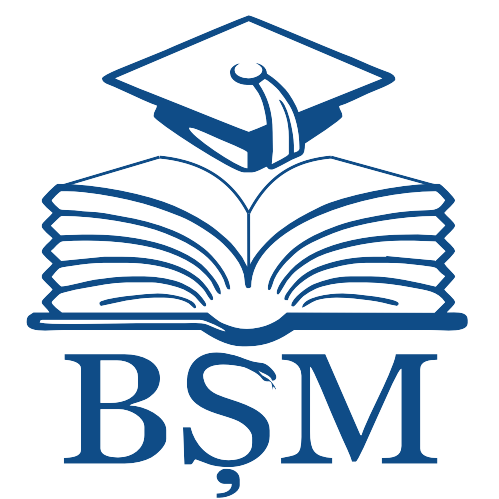|
|
- IRMS - Nicolae Testemitanu SUMPh
- 1. COLECȚIA INSTITUȚIONALĂ
- Revista de Științe ale Sănătății din Moldova
- Revista de Științe ale Sănătății din Moldova : Moldovan Journal of Health Sciences 2024 Vol. 11, Issue 2
Please use this identifier to cite or link to this item:
http://hdl.handle.net/20.500.12710/29847
| Title: | Sindromul algic la pacienți cu disfuncții mandibulocraniene și edentații parțiale terminale |
| Other Titles: | Pain syndrome in patients with craniomandibular dysfunctions and terminal partial edentations |
| Authors: | Pântea, Vitalie
Bordeniuc, Gheorghe
Burduja, Veronica
Tighineanu, Marcela
Vovc, Maria-Mihaela
Fala, Valeriu |
| Keywords: | pain syndrome;craniomandibular dysfunction;quantitative-sen sory testing |
| Issue Date: | 2024 |
| Publisher: | Instituţia Publică Universitatea de Stat de Medicină şi Farmacie „Nicolae Testemiţanu” din Republica Moldova |
| Citation: | PÂNTEA, Vitalie; BORDENIUC, Gheorghe; BURDUJA, Veronica; TIGHINEANU, Marcela; VOVC, Maria-Mihaela; FALA, Valeriu. Sindromul algic la pacienți cu disfuncții mandibulocraniene și edentații parțiale terminale = Pain syndrome in patients with craniomandibular dysfunctions and terminal partial edentations. In: Revista de Ştiinţe ale Sănătăţii din Moldova = Moldovan Journal of Health Sciences. 2024, vol. 11(3), an. 2, p. 848. ISSN 2345-1467. |
| Abstract: | Introducere. Sindromul algic din disfuncția mandibulocraniană (DMC) este cea mai frecventă durere orofacială de
origine non-dentară. Algia este însă un fenomen subiectiv, în
literatura de specialitate fiind cunoscuți o serie de procese
sistemice care pot influența experiența durerii, însă factorii
periferici (precum asocierea edentației parțială terminală)
sunt insuficient studiați. Scopul lucrării. Evaluarea particularităților de expresie a sindromului algic la pacienți cu disfuncție mandibulocraniană în funcție de absența/prezența
edentației parțiale terminale. Material și metode. Au fost
examinați 91 de pacienți cu disfuncții mandibulocraniene
(21 cu edentații parțiale terminale asociate). Parametrii
subiectivi algici investigați au fost intensitatea (chestionar
GCPS), durata și frecvența durerii (inventarul SSI). Obiectivizarea durerii s-a realizat prin testare cantitativ-senzorială (praguri de sensibilitate/toleranță/anduranță algici față
de stimul mecanic). Diferențele dintre grupe s-au investigat
în baza testului ANOVA. Rezultate. La pacienți disfuncționali cu edentații parțiale terminale asociate, se observă că
indicii algici subiectivi (intensitatea, durată, frecvență) au o
tendință de agravare, fără semnificație statistică (p > 0.05).
Indicii obiectivi ai durerii prezintă diverse tendințe de modificare la asocierea edentațiilor, astfel la nivel de mușchi
maseter, scade pragul de sensibilitate algică, însă pentru
toleranță și anduranță se atestă valori aproximativ similare;
la nivel de ATM, scade pragul de sensibilitate și anduranța
algică, însă sporește pragul de toleranță algică. Concluzie:
Tendințele hiperalgezice la pacienți cu DMC și edentații bilaterale asociate ar reflecta modificarea percepției sensibilității algice la nivel de structuri a sistemului stomatognat.
Introduction. Pain syndrome in craniomandibular dysfunction (CMD) is the most common non-dental orofacial pain.
Pain is a subjective phenomenon, thus in the specialized literature a series of systemic processes that can influence the
experience of pain are known, but peripheral factors (such
as the association of terminal partial edentulism) are insufficiently studied. The purpose of the paper: Evaluation
of the peculiarities of expression of the pain syndrome in
patients with craniomandibular dysfunction based on the
association of terminal partial edentulism. Material and
methods: 91 patients with craniomandibular dysfunctions
(21 with associated terminal partial edentulism) were examined. The subjective pain parameters investigated were
pain intensity (GCPS), pain duration and frequency (SSI).
Objective pain parameters were recorded through quantitative-sensory testing (pain thresholds of sensitivity/tolerance/endurance to the mechanical stimulus). Differences
between groups were investigated based on the ANOVA
test. Results. In dysfunctional patients with associated terminal partial edentulism, it is observed that the subjective
pain indices (intensity, duration, frequency) have a tendency to worsen, without statistical significance (p > 0.05).
The objective pain indices show various tendencies when
the edentulism is associated to CMD, thus at the level of the
masseter muscle, the pain sensitivity threshold decreases,
but the tolerance and endurance thresholds are approximately similar; at the level of the TMJ, the pain sensitivity
and endurance thresholds decrease, but the pain tolerance
threshold increases. Conclusion. Hyperalgesia tendencies
in patients with CMD and associated bilateral edentulism
may reflect the change in the perception of pain at the level
of structures of the stomatognathic system. |
| metadata.dc.relation.ispartof: | Revista de Științe ale Sănătății din Moldova = Moldovan Journal of Health Sciences |
| URI: | https://cercetare.usmf.md/sites/default/files/inline-files/MJHS_11_3_2024_anexa2__site.pdf
https://repository.usmf.md/handle/20.500.12710/29847 |
| ISSN: | 2345-1467 |
| Appears in Collections: | Revista de Științe ale Sănătății din Moldova : Moldovan Journal of Health Sciences 2024 Vol. 11, Issue 2
|
Items in DSpace are protected by copyright, with all rights reserved, unless otherwise indicated.
|


